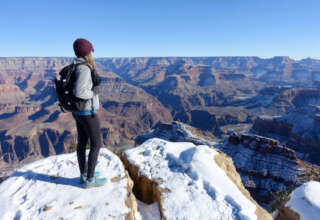
Hiking is an enjoyable outdoor activity that can be experienced by people of all ages and abilities. It offers a great opportunity to connect with nature, get some exercise, and enjoy stunning views. For those who are deaf or hard of hearing, hiking can be an even more enriching experience when using American Sign Language (ASL). In this article, we’ll explore how hiking in ASL can enhance your experience and provide some tips for getting started.
Why Hike in ASL?
Hiking in ASL allows deaf and hard of hearing hikers to communicate with each other and share their experiences on the trail. Sign language is a visual language that can be used in noisy or quiet environments, making it an ideal way to communicate while hiking. By using ASL, hikers can share their observations of the surrounding environment, point out interesting flora and fauna, and discuss any challenges or concerns along the way.
Another benefit of hiking in ASL is the opportunity to connect with other deaf and hard of hearing hikers. It can be a great way to build friendships and share common interests. Hiking clubs and groups for the deaf and hard of hearing are becoming more common, making it easier to connect with other hikers who use ASL.
Tips for Hiking in ASL
If you’re new to hiking in ASL, here are some tips to help you get started:
- Learn basic hiking signs: Before hitting the trail, it’s a good idea to learn some basic hiking signs. These include signs for trail, hike, climb, uphill, downhill, water, rock, and tree, among others. There are many resources available online for learning hiking signs, including videos and instructional materials.
- Use facial expressions: Facial expressions are an important part of ASL and can convey emotions and attitudes. When hiking, use facial expressions to convey excitement, surprise, concern, or other emotions related to the trail.
- Communicate clearly: When communicating in ASL, it’s important to be clear and concise. Avoid using long sentences or complex signs that may be difficult for others to understand. Instead, use simple signs and short phrases to convey your message.
- Take breaks: Hiking can be physically demanding, so it’s important to take breaks and rest when needed. Use these opportunities to communicate with other hikers, share your experiences, and enjoy the scenery.
- Respect others’ communication preferences: While hiking in ASL can be a great way to connect with others, not everyone may prefer to communicate in this way. Be respectful of others’ communication preferences and use the method that works best for everyone.
Conclusion
Hiking in ASL can be a rewarding experience that enhances your connection to nature and allows you to communicate with others on the trail. By learning basic hiking signs, using facial expressions, communicating clearly, taking breaks, and respecting others’ communication preferences, you can make the most of your hiking experience in ASL. So, grab your hiking boots, hit the trail, and enjoy the great outdoors through sign language!















